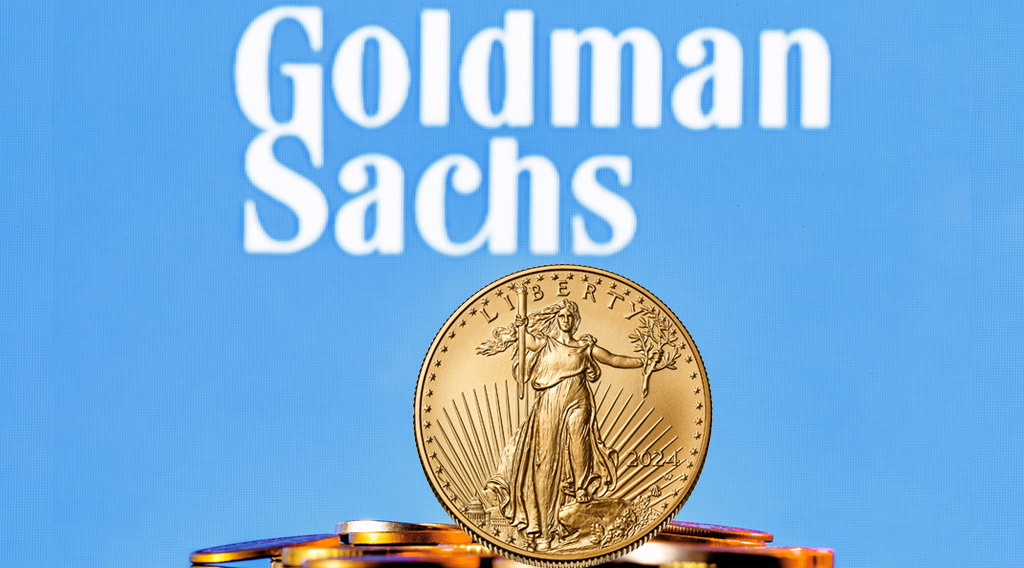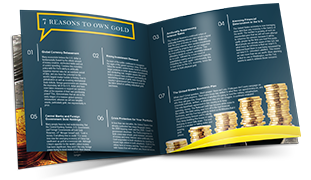 Goldman Sachs predicts gold could touch $4,200 by year-end in an extreme scenario. This optimistic analysis comes shortly after gold cements itself firmly above the $3,000 psychological mark and climbs to fresh records.
Goldman Sachs predicts gold could touch $4,200 by year-end in an extreme scenario. This optimistic analysis comes shortly after gold cements itself firmly above the $3,000 psychological mark and climbs to fresh records.
A “Tail-Risk” Forecast
As the yellow metal continues topping records, banks across the board have been revising their 2025 price gold forecasts to the upside. Goldman Sachs recently upped its final target to $3,300, up from $3,100. Analysts also raised their anticipated trading range to $3,250 and $3,520.
Yet, many investors have latched onto the bank’s highest benchmark, especially after gold cleared the group’s base-case high. This tail-risk scenario—a rarer event on a distribution of possible outcomes—could send prices skyrocketing to $4,200.
The bank’s most bullish estimate joins a rising trend of financial institutions and market experts predicting prices will cross $4,000 in the not-so-distant future.
Extra Bullish Trends
Government Demand
The world’s second-largest investment bank attributes its favorable gold forecast to robust central bank demand, especially from Eastern countries. Over the past three years, there’s been a direct correlation between heightened national consumption and elevated gold prices. Between 2022 and 2024, governments bought more than 1,000 tons of gold . During the same period, gold nearly doubled in value.
Analysts at Goldman Sachs expect this trend to continue, raising their 2025 consumption estimates from 50 tons to 70 tons per month. This would represent an annual demand of 840 tons, which falls in line with UBS’s estimate of 1,000 tons . According to the bank, Asian countries will lead the gold rush this year—a view supported by Q1 data showing China, Turkey, and India as the top gold buyers.
Favorable Fed Policy
The Federal Reserve’s monetary policy could trigger a nonlinear surge in gold prices if the economy enters a recession.
While Goldman Sachs forecasts two 25-basis-point rate cuts in 2025, in line with Wall Street consensus, a sharp economic downturn could prompt a much steeper easing cycle.
The probability of a recession stands at 45% , according to the bank, signaling a considerable chance of fiscal pain down the line.
Gold typically gains value during recessions as it becomes more attractive as yielding assets lose their luster in a low-rate environment.
Strong ETF Inflows
A resurgence in gold exchange-traded fund (ETF) inflows to pandemic-era highs could help drive gold toward Goldman Sachs’ tail-risk target. So far, retail investors have largely stayed on the sidelines, while central banks have propelled the yellow metal’s record-setting rally. Analysts believe a strong wave of retail demand could provide a fresh boost for gold to climb even higher.
Gold ETF activity is already on pace to hit this milestone with Q1 inflows reaching $296 billion . This marks the strongest first quarter since 2021. At this rate, gold ETFs could attract $500 billion worth of investments by the end of the year. Such positive inflows boost gold prices by increasing overall market demand and tightening available supply .
Potential Pullback Scenarios
In addition to outlining a rare scenario of rapid gold price growth, Goldman Sachs also pointed to several potential yet unlikely downside risks that could weigh on gold.
Russia-Ukraine Peace Deal
If Russia and Ukraine strike a peace deal, markets could engage in speculative selling. The bank notes that this would be unlikely to affect the supply deficit resulting from heightened gold demand and a stagnant supply. Despite Trump’s efforts, a settlement of any kind seems far away as Russia continues stymying progress.
Steep Equity Sell-Off
Analysts warn that a sharp downturn in the stock market could temporarily pull gold prices down as well. In a broad rush to raise cash, some investors might sell gold alongside equities. However, Goldman Sachs expects this gold selling to be short-lived. As riskier assets fall, investors tend to shift back into safe havens like gold, driving prices higher again.


